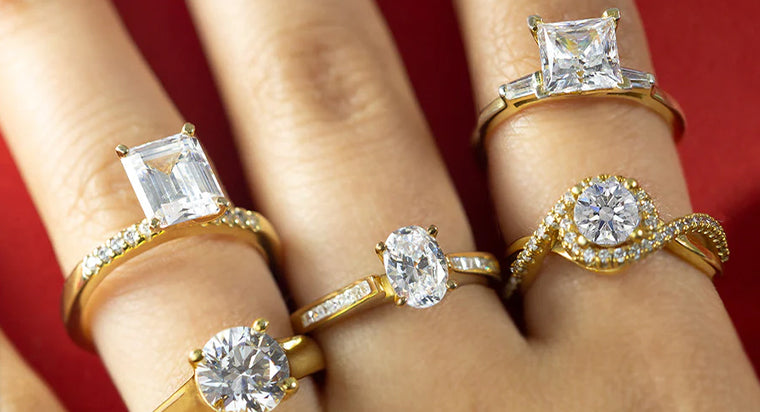Diamonds are renowned for their unparalleled beauty and brilliance, but did you know that their mesmerizing sparkle is largely influenced by their cut? In the world of gemstones, diamond cuts play a pivotal role in determining a stone’s fire, brilliance, and overall visual appeal. In this article, we delve into the fascinating world of diamond cuts, exploring their history, significance, and the various styles that contribute to the dazzling array of diamond jewelry available today.
Understanding Diamond Cuts
Diamond cuts refer to the precision with which a rough diamond is shaped and faceted to maximize its optical properties. A well-executed cut can enhance a diamond’s natural beauty by optimizing its ability to reflect and refract light, resulting in the mesmerizing sparkle that diamonds are known for. From classic round brilliants to fancy shapes like princess and emerald cuts, each diamond cut has its own unique characteristics and allure.
The Importance of Cut Quality
When it comes to evaluating the quality of a diamond, experts often consider the cut as one of the most critical factors. A well-cut diamond will exhibit exceptional brilliance, fire, and scintillation, while a poorly cut stone may appear dull and lifeless, regardless of its color or clarity. The precision and skill required to achieve the perfect cut are paramount, as even minor deviations can significantly impact a diamond’s beauty and value.
Popular Diamond Cuts
Round Brilliant Cut:
The round brilliant cut is perhaps the most iconic and popular diamond shape, renowned for its unparalleled sparkle and versatility. With its symmetrical facets and optimal proportions, the round brilliant cut maximizes light performance, making it an ideal choice for engagement rings, earrings, and pendants.
Princess Cut:
The princess cut is a square or rectangular-shaped diamond with sharp, pointed corners and a faceted pavilion. Known for its contemporary elegance and geometric appeal, the princess cut offers exceptional brilliance and fire, making it a popular choice for engagement rings and statement jewelry.
Emerald Cut:
The emerald cut is characterized by its long, rectangular shape and step-cut faceting, which creates a hall-of-mirrors effect. While not as fiery as some other cuts, the emerald cut showcases the diamond’s clarity and elegance, making it a favorite for vintage-inspired designs and sophisticated settings.
Cushion Cut:
The cushion cut is a square or rectangular-shaped diamond with rounded corners and large facets that resemble a cushion or pillow. With its soft, romantic appeal and gentle sparkle, “man made diamonds” the cushion cut is a timeless choice for engagement rings and vintage-inspired jewelry.
The Future of Diamond Cuts
As technology advances and consumer preferences evolve, we can expect to see continued innovation and experimentation in the world of diamond cuts. From precision-cutting techniques to avant-garde designs that push the boundaries of traditional aesthetics, the future of diamond cuts is bound to be as diverse and dynamic as the stones themselves.
Conclusion
In conclusion, diamond cuts play a pivotal role in determining the beauty, brilliance, and overall appeal of a diamond. Whether opting for a classic round brilliant or a contemporary princess cut, the choice of cut can significantly impact the visual impact and emotional significance of a piece of jewelry. By understanding the characteristics and nuances of different diamond cuts, consumers can make informed decisions and choose the perfect stone to suit their style and preferences.

